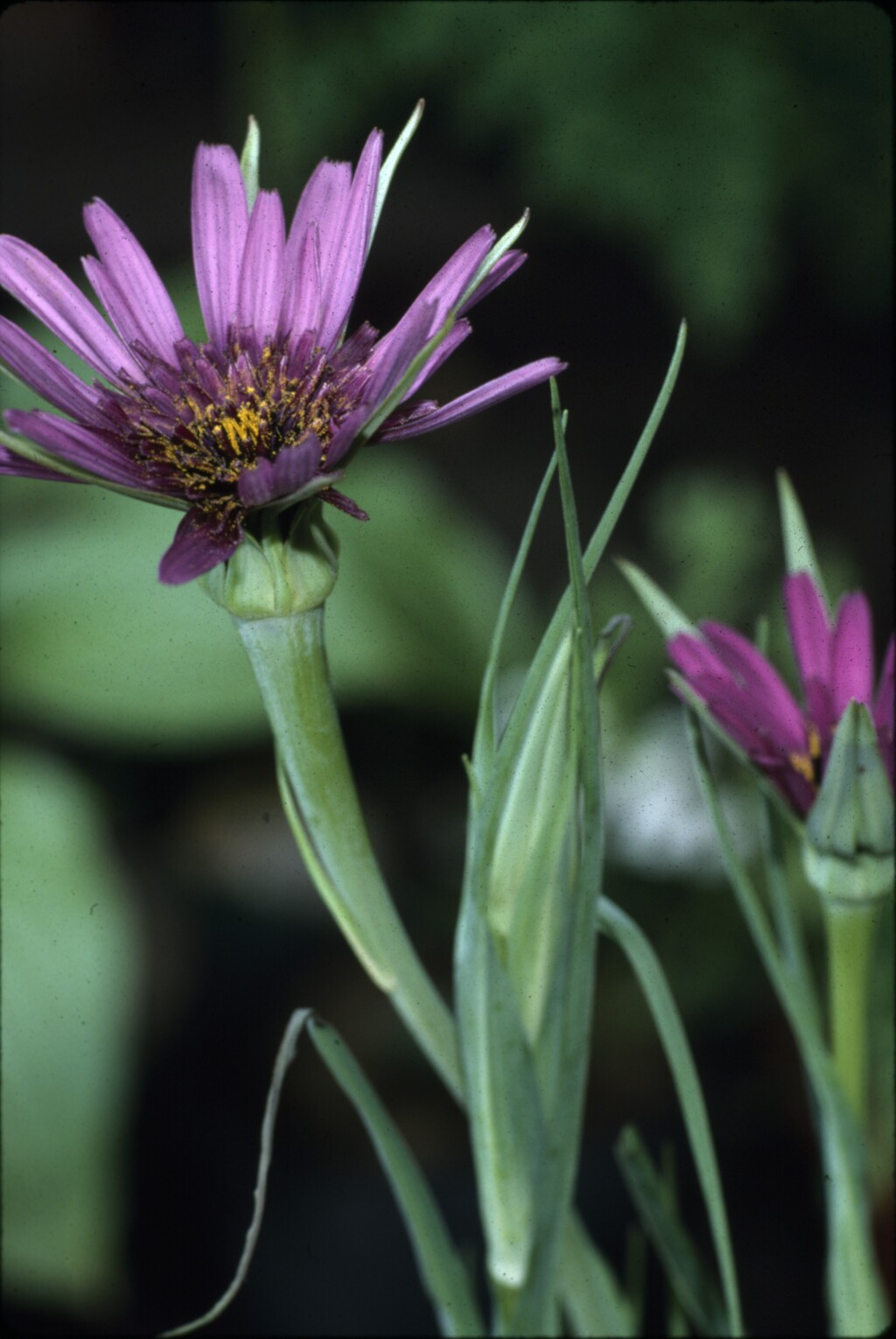Tragopogon porrifolius
L. SalsifyBiennial herb 30–125 cm high, glabrous, somewhat glaucous. Leaves grass-like, the basal ones tufted, mostly 5–30 cm long, 1–2 cm wide, acute; cauline leaves similar, subamplexicaul. Capitula 1–few, opening in the morning and closing during the day; peduncles inflated below capitula; involucral bracts c. 8, 2.5–6 cm long. Ligules 15–25 mm long, not exceeding involucre, lilac to deep violet. Outer cypselas 20–35 mm long, curved, ribbed, muricate, brown, with beak and body c. equal; inner cypselas smaller, straight, slightly ribbed; pappus 15–25 mm long, brownish. Flowers mostly Oct.–Jan.
MuM, Wim, VVP, VRiv, MuF, GipP, OtP, WaP, Gold, CVU, GGr, EGU, HSF, HNF, MonT. Also naturalised WA, SA, Qld, NSW, ACT, Tas. Native to the Mediterranean region. An occasional but widespread weed of roadsides, pasture, wasteland and other disturbed sites.
The fleshy boiled or baked taproot is eaten and considered by some to taste like oysters (hence the common name).
Jeanes, J.A. (1999). Asteraceae. In: Walsh, N.G.; Entwisle, T.J., Flora of Victoria Vol. 4, Cornaceae to Asteraceae, pp. 652–666. Inkata Press, Melbourne.
 Spinning
Spinning




